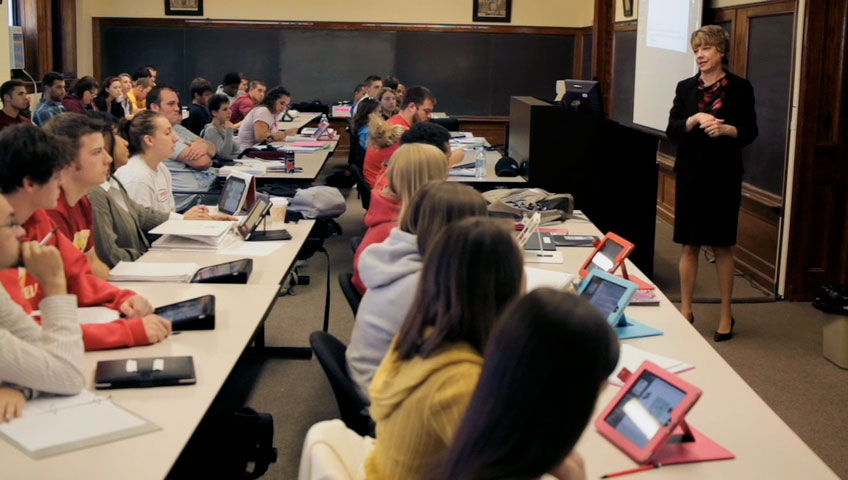Textbooks in the classroom
December 13, 2017
Printed textbooks have been used in schools for hundreds of years; however, this has drastically changed as some studies say that digital is better than printed. In recent years, schools and universities across the US are using this research and now require that students get online textbooks as they are cheaper than printed textbooks. In reality, however, printed textbooks are more efficient than digital textbooks as they help students retain more information.
Surprisingly, teens and many other aged students prefer a print textbook over a digital copy. In a study done by Student Monitor, 87 percent of all textbook spending was for paper copies. This high percentage was most likely due to the fact that students could manually flip through pages, look up words and highlight key parts of a textbook. These features are extremely quirky and weird when attempted in most digital textbooks. When trying to flip through pages, students must wait around half a second each time they flip the page of a digital textbook. When students also want to search keywords or highlight certain parts, many textbooks require the user to copy the word, click highlight and then store the highlighted page in a hidden folder. This complicated solution makes normal annotations required in books just too difficult to create.
Another reason in why paper textbooks are better in the classroom comes down to students’ ability to become easily distracted while using technology. In an analysis on ProCon about textbooks, around 4/5 of students aged 8-18 admit that they easily get distracted while using any sort of digital media such as digital textbooks.
Due to the recent improvements in technology, people now believe that digital textbooks are better for students as they minimize the cost spent on books. However, the total cost to operate a tablet for school use is more expensive than just buying the book. Schools must pay for the installation of internet servers, buy a mass amount of tablets, buy the digital books and then hire maintenance workers to ensure students use their devices correctly. In an analysis on ProCon about textbooks, the total cost of implementing a digital textbook system in a school is around 552 percent higher than the cost of buying paper textbooks. This staggering increase in costs puts a huge dent in the tuition students must pay.
In recent years, the debate between digital textbooks versus printed textbooks has increased tremendously due to the huge influx of schools switching to online versions of books. Although many parents believe in the idea of switching to cheaper textbook options, we really need to focus on which textbook platform is the most efficient in teaching. The ways we teach students today will model the shape of the future, we must not take shortcuts in education.































